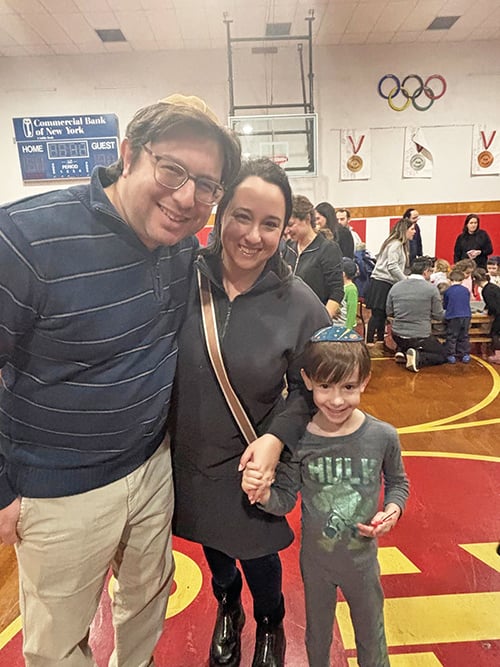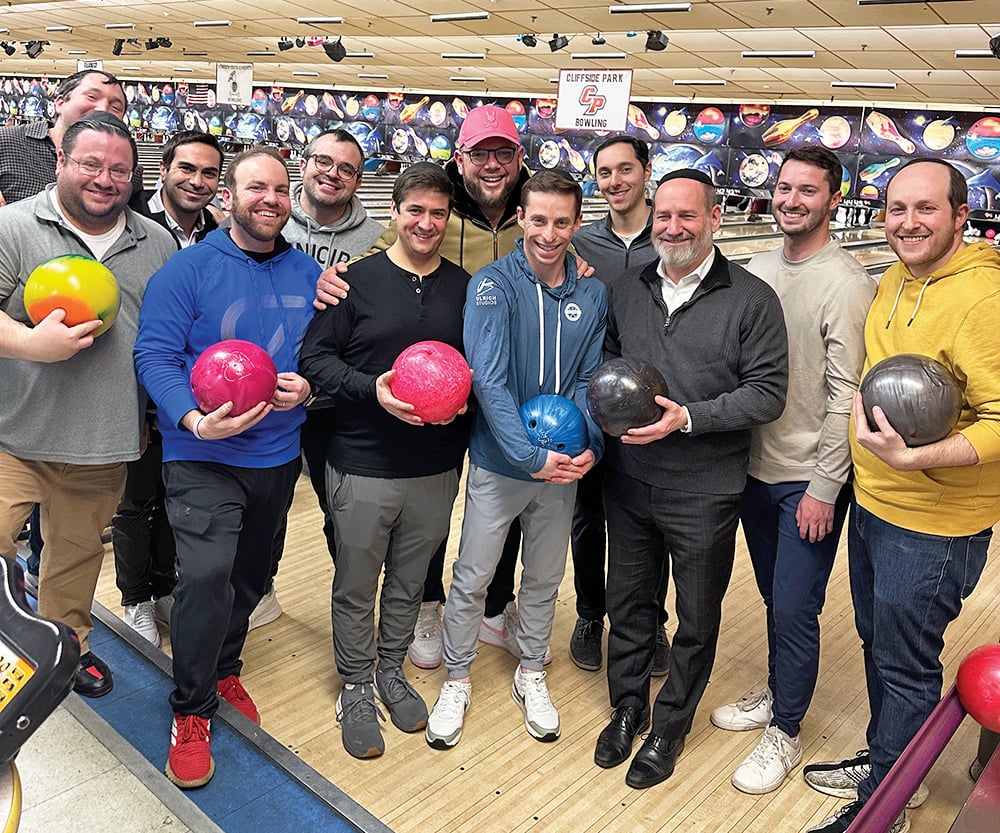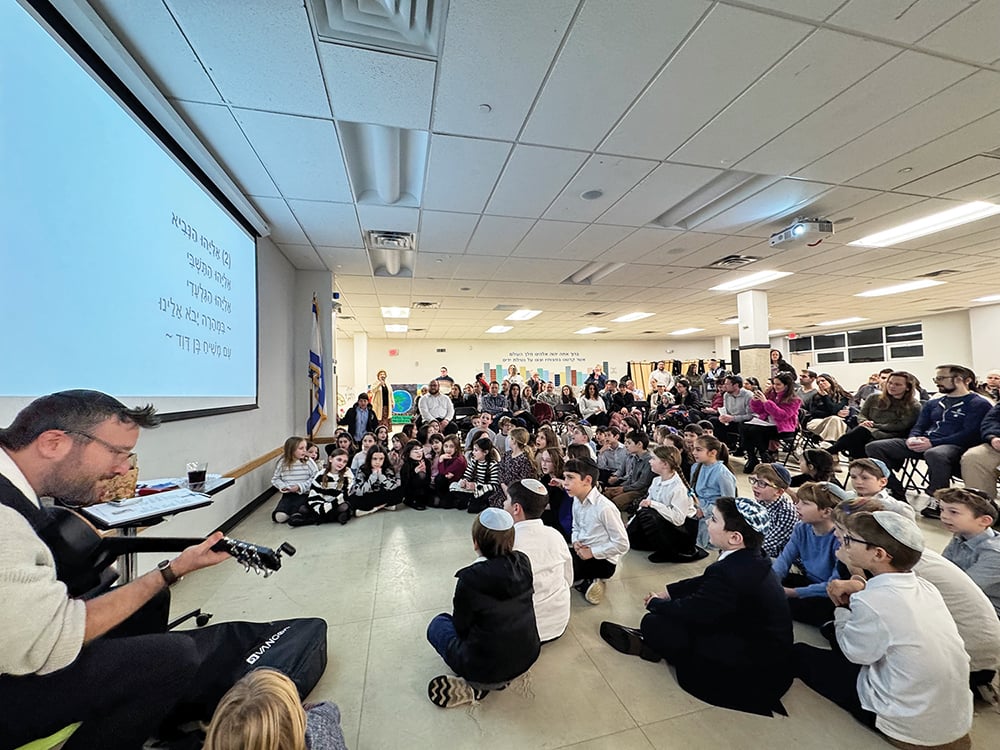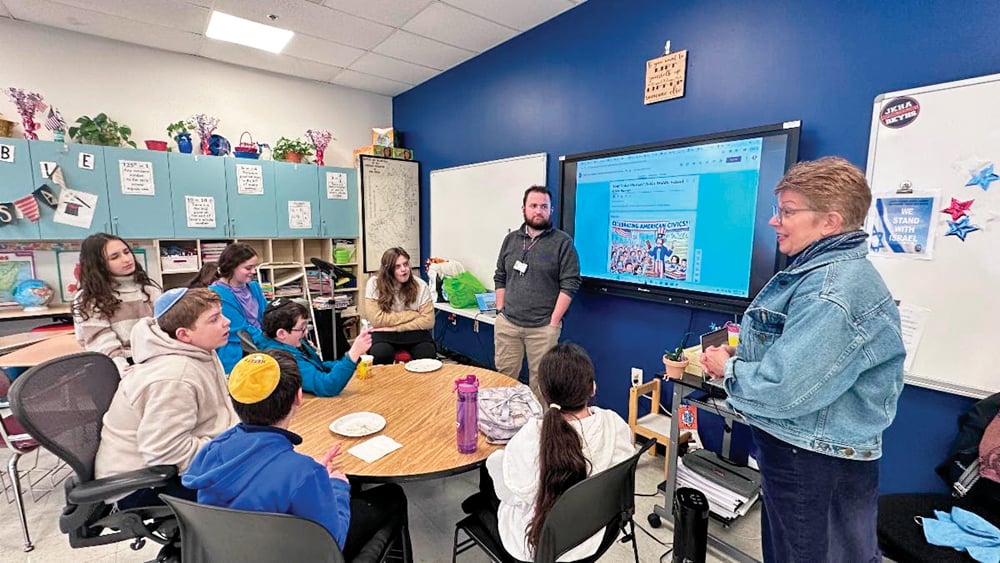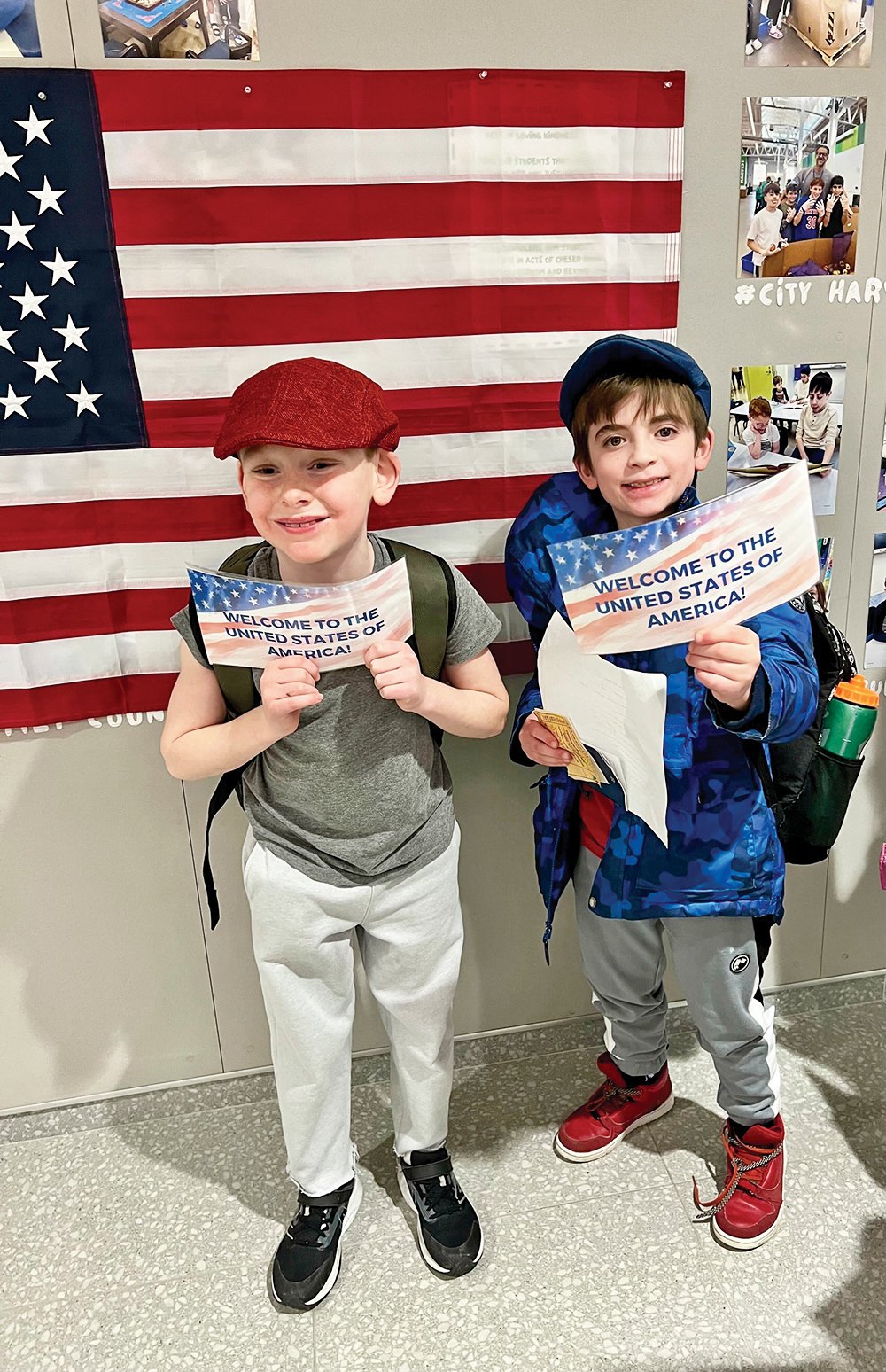

Residents of Hackensack, in the center of Bergen County, and those who visit the Hackensack University Medical Center, which regularly treats patients from surrounding Jewish communities, can now benefit from a kosher eruv that connects it to the towns of Teaneck, Paramus, Bergenfield and New Milford. The project, now completed, was more than two and a half years in the making.
An eruv is a complete, circuitous series of unobtrusive wire markers placed on trees or utility poles that establish a religious border around a community, allowing observant Jews to carry items and push strollers or wheelchairs on Shabbat and Yom Kippur.
The Chana Tova Poupko Hackensack Eruv was created through the uniquely situated and focused dedication of three local rabbanim: Rabbi Chaim Poupko of Englewood’s Congregation Ahavath Torah; Rabbi Mendy Kaminker of Chabad of Hackensack; and Rabbi Chaim (Howard) Jachter, Rabbi of the Teaneck’s Shaarei Orah.
Rabbi Jachter, a dayan at the Beth Din of Elizabeth, is a nationally recognized expert in eruv construction and halachot.
It was Rabbi Poupko and his wife Shoshana who first vocalized the need for an eruv in the Hackensack region, during many visits several years ago to Hackensack University Medical Center. “When our daughter Chana was sick in 2013 and 2014, we were in the hospital for many shabbatot and yom tovim. Because there was no eruv in Hackensack, it meant two things: First, you can’t get from one building to the next in the hospital without going outside.” Rabbi Poupko explained that the most active kosher kitchens were in the women’s and children’s hospital, and family members could not carry things back and forth between buildings.
“Second, for people who wanted to walk to and from the hospital, from Englewood in our case, or Teaneck or Bergenfield for many others, we could not carry anything with us, and it’s a very long walk.” Those visiting family or friends in the hospital are often inclined to take the long walk on Shabbat—three miles or more—but without an eruv cannot even plan to carry a bottle of water with them. Bringing fresh Shabbat food to patients would be out of the question.
Sadly, Chana Tova Poupko was niftar in 2014. When it came time to create chesed initiatives to dedicate to Chana’s memory, the Poupko family sought to upgrade and dedicate the Shabbat rooms, which they did, together with Bikur Cholim of Bergen County and the hospital. “Our beloved community at Congregation Ahavath Torah in Englewood contributed generously to the projects we wanted to do in Chana’s memory. In addition to the Shabbat rooms, we wanted to build a small eruv just within the hospital grounds; we saw that as a modest goal. We raised the money at that time and even hired Rabbi Jachter to map out a proposal for the hospital perimeter.”
However, the hospital eruv effort, Rabbi Poupko explained, was very slow going, “because we didn’t have anyone on the ground, and hospital staff was doing construction which needed to be finished before they took this project up with the town.”
Rabbi Kaminker arrived in Hackensack on Rosh Hashanah 2018 as the founding rabbi of the first Hackensack Chabad House, located on Summit Avenue in the former Temple Beth El building, which had been purchased by Teaneck Chabad’s Rabbi Ephraim Simon. Rabbi Poupko said that Rabbi Kaminker energized the eruv effort and was an incredible catalyst for positive change.
“Once Rabbi Kaminker arrived, I told him we had raised the eruv money already in memory of Chana. Thank God Rabbi Kaminker really stayed on it. He’s really on the ground and got to know the people in Hackensack. All the credit for this goes to him,” said Rabbi Poupko.
But the third person in this equation is possibly the nation’s most sought-after eruv designer, who is known internationally for his specialized skill on eruv issues. Rabbi Jachter—supported by his Teaneck/Bergenfield/New Milford eruv vaad which also includes Rabbi Zvi Sobolofsky and Rabbi Michael Taubes, as well as Paramus vaad administrator Rabbi Daniel Wolf, of Congregation Beth Tefillah in Paramus—was able to design and build a new eruv for Hackensack which connected all the local eruvin together.
“This eruv is a testament to Rabbi Jachter’s creativity. It is tremendous what he has been able to do. Rabbi Jachter is a major asset to the community. It’s a walk, but it’s doable now to be able to visit people on Shabbat,” said Rabbi Poupko.
“I think this is the biggest eruv now in the region,” added Rabbi Kaminker.
Rabbi Kaminker expressed gratitude for the two rabbinic colleagues who enabled the eruv construction for Hackensack, noting that its creation helps multiple populations. “In addition to serving the Jews who visit the hospital or those who walk from Teaneck, one of the great motivators for us to construct the eruv was the people who live in Hackensack. Granted, not many of them are Shabbat observant, but having an eruv now means that even if they don’t know about the eruv, when they carry outside, they don’t violate the Shabbat. One mitzvah leads to another, and this will surely help people do more mitzvot,” said Rabbi Kaminker.
Rabbi Jachter told The Jewish Link that the new eruv was installed using 16 lechis, and follows some borders including utility poles along Route 4. “After Hurricane Sandy, they [utility companies] installed taller, stronger poles and often these can be used without lechis. This has benefits for Hackensack, to people staying in the hospital, and to people in the Paramus eruv. It benefits the Teaneck eruv because both sides of Teaneck Road are now within the eruv,” he explained.
“Rabbi Wolf is in charge of maintaining the Paramus eruv, which was expanded to touch and connect both Hackensack and Teaneck/Bergenfield/New Milford. All the eruvin are now connected more [solidly] than they were before,” Rabbi Jachter added.
“I went to Paramus with Rabbi Jachter,” recalled Rabbi Kaminker, “simply driving through the streets and seeing how much more we can follow those poles. We are following Rabbi Jachter’s electrical highway poles, where the wire is going on top of the pole, those poles don’t require a lechi. We ended up needing only a minimum number of lechis, which was amazing since each additional lechi added a cost.
“As we were driving, Rabbi Jachter told me: ‘When the Beis HaMikdash is going to be rebuilt, we will have to bring a korban todah because this worked,’” said Rabbi Kaminker.
Learn more about the Hackensack eruv here: https://www.hackensackeruv.com/.
By Elizabeth Kratz




